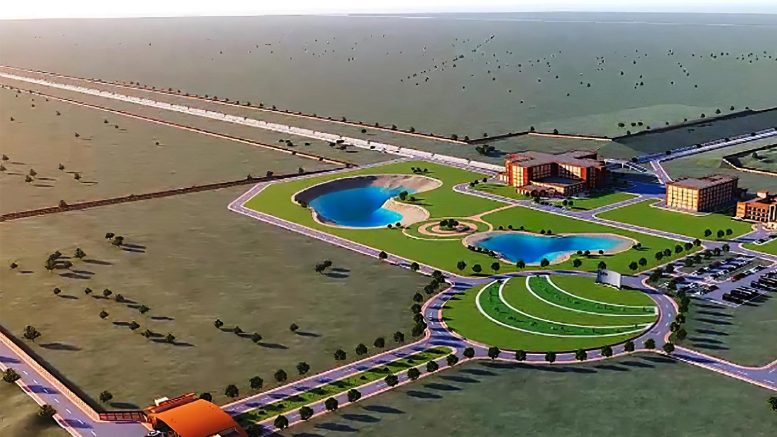
The Indian government has approved the construction of LIGO-India, a $320-million project nearly identical to the twin LIGO (Laser Interferometer Gravitational-Wave Observatory) facilities in the US. The observatory, expected to begin observations by the end of the decade, will significantly enhance scientists’ ability to pinpoint the sources of gravitational waves and answer fundamental questions about the universe. LIGO-India will be part of a global network of gravitational-wave observatories, joining Virgo in Italy and KAGRA in Japan, and will fill in blind spots in the current network. Credit: Caltech
India has approved the construction of LIGO-India, a gravitational-wave observatory that will join a global network, enhancing the ability to pinpoint sources of gravitational waves and answer fundamental questions about the universe.
The Indian government has granted the final approvals necessary for construction to begin on LIGO-India, a nearly identical version of the twin LIGO (Laser Interferometer Gravitational-Wave Observatory) facilities that made history after making the first direct detection of ripples in space and time known as gravitational waves in 2015. The Indian government will spend about $320 million to build LIGO-India, with first observations expected by the end of the decade.
“We’ve worked very hard over the past few years to bring a LIGO detector to India,” says David Reitze, the executive director of the LIGO Laboratory at Caltech. “Receiving the green light from the Indian government is a very welcome development that will benefit not only India but the entire international gravitational-wave community.”
“As the newest gravitational-wave detector, LIGO-India will have all of our latest and best techniques incorporated from the get-go,” says Rana Adhikari, a professor of physics at Caltech who helps lead the development of LIGO-India along with Reitze and others on the LIGO team, in collaboration with Indian scientists.
LIGO-India is a collaboration between the LIGO Laboratory—operated by Caltech and MIT and funded by the National Science Foundation (NSF)—and India’s Raja Ramanna Center for Advanced Technology (RRCAT), Institute for Plasma Research (IPR), Inter-University Centre for Astronomy and Astrophysics (IUCAA), and the Department of Atomic Energy Directorate of Construction Services and Estate Management (DCSEM). The planned facility—which, like the LIGO observatories in Hanford, Washington, and Livingston, Louisiana, will include an L-shaped interferometer with 4-kilometer-long arms—will be built near the city of Aundha in the Indian state of Maharashtra.
When LIGO-India is completed, it will join a global network of gravitational-wave observatories that includes Virgo in Italy and KAGRA in Japan. With its advanced gravitational-wave-sensing technology, LIGO-India will greatly improve the ability of scientists to pinpoint the sky locations of the sources of gravitational waves. Because of its location on Earth with respect to LIGO, Virgo, and KAGRA, it will also fill in blind spots in the current gravitational-wave network.
“LIGO-India will increase the precision with which we can localize the gravitational-wave events by an order of magnitude,” says Adhikari. “This will greatly enhance our ability to answer fundamental questions about the universe, including how black holes form and the expansion rate of our universe, as well as to more rigorously test Einstein’s general theory of relativity.”
“I am very pleased to learn of the Indian Cabinet’s approval of construction funding for a gravitational-wave observatory there,” says NSF director Sethuraman Panchanathan. “Partnering with like-minded nations like India who share our values and aspirations will not only make possible fantastic discoveries but, more importantly, energize talent and unleash innovation everywhere. Utilizing high-tech interferometer components developed by the NSF-funded LIGO collaboration, LIGO-India will augment the existing network of gravitational-wave detectors—the two LIGO detectors in the U.S., Virgo in Italy, and KAGRA in Japan—to enable more precise identification of the location of gravitational-wave sources and more robust monitoring of their signals. This will give a big boost to researchers around the world who will combine observations from optical and radio telescopes with the information from the gravitational-wave network to make new discoveries about the universe.”
So far, LIGO and Virgo have detected the massive rumblings of dozens of collisions between black holes. In 2017, the observatories also detected a collision between neutron stars that sent out not only gravitational waves but a powerful burst of light waves spanning the electromagnetic spectrum. Because all three gravitational-wave detectors (LIGO’s twin facilities and Virgo) were observing the sky during the 2017 event, scientists were able to narrow down the region of sky where the event occurred. This proved to be a crucial factor in guiding the light-based telescopes to pinpoint the precise location of the spectacular blast. The light-based observations led to the discovery that heavy elements, such as gold, were forged in the cosmic explosion.
Since that event, one more collision involving neutron stars was confidently detected by the LIGO-Virgo network, although it was not seen with light-based telescopes. With LIGO-India’s eyes on the sky, spotting these so-called multi-messenger events (where light and gravitational waves are the messengers) should become an easier task.
Some preconstruction activities for LIGO-India have already taken place, such as the design of the LIGO-India buildings, the construction of the roads that lead into the site, and the fabrication and testing of vacuum chambers. The facility will be built by Indian researchers working jointly with members of the LIGO team.
The international collaboration has already resulted in an exchange of ideas and new relationships between the two countries. For instance, dozens of Indian students have been chosen to work with the LIGO team as part of Caltech’s Summer Undergraduate Research Fellowship (SURF) program. In addition, Caltech plans to invite several visiting scientists from India to work on LIGO at Caltech.
“Having a distant third LIGO observatory in the international network, which benefits from common instrument designs, commissioning knowledge, technical coordination, and sensitivity, will fulfill a longstanding LIGO goal,” says Fred Raab, the former associate director for observatory operations at LIGO Hanford who has been working on the LIGO-India project for nearly a decade. “This will be a game-changer for science.”

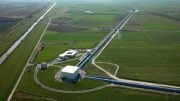

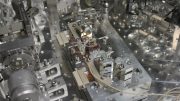
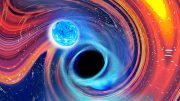



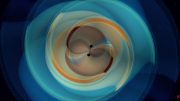
Definitely gravitational waves are found from the collision of two neutŕon stars/black holes or collision of a neutron star with a black hole.This waves occure due to change of position of mass in space can be detected by using equations of star dynamics or otherwise by Einstein’s GR within 1% of error simpĺy in magnitude,retaining the Theory intact.So,extension of Gravitational Wave detection project upto LIGO,India is welcomed.